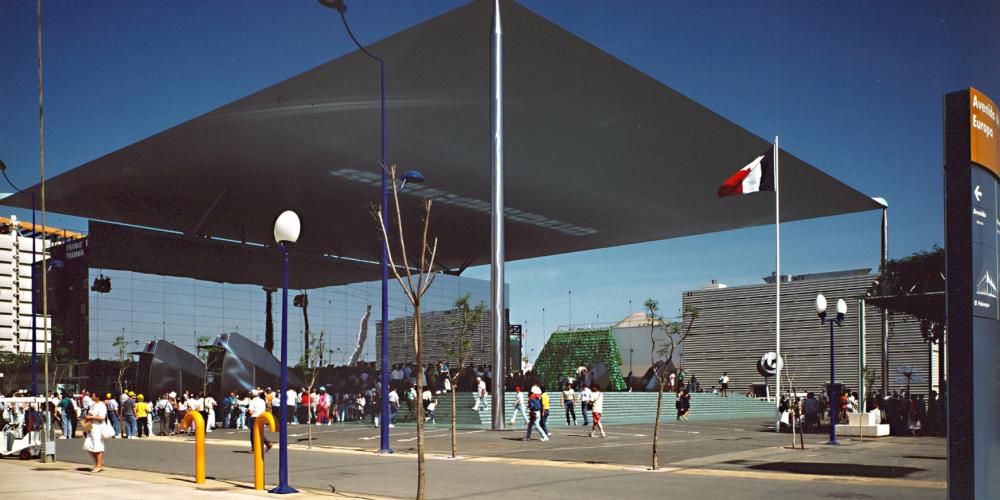Applying modern architecture to an ancient masterpiece

What was your initial reaction when you were asked to work on the Pont du Gard?
J.P.V: It was a very complex problem and an unusual and surprising project for me. I had never had to deal with heritage-type issues at this level before. Initially I was sceptical, but when I met with the archaeologists I realised that I could help improve the site's architecture. It was the thrill of seeing the monument that completely convinced me. The archaeologists explained to me something that I hadn't previously grasped and what most visitors haven't grasped either: the role of water in the Roman conquest, both as a source of power and an essential tool in modernising cities, and the technological superiority that mastery of this element demonstrated in the ancient world. This is actually brilliantly illustrated by the aqueduct.
And then, there’s this indescribable feeling when you come here and see the monument, described by Stendhal in his Mémoires d’un Touriste (Memoirs of a Tourist – 1854): 'happily for the traveller who lives for art, wherever he turns his gaze, he finds no sign of habitation, or trace of civilisation: thyme, wild lavender, rosemary and species endemic to this barren land release their single-note fragrances under a dazzling serene sky. The soul is left entirely to itself, drawing your attention, inevitably, to the Roman masterpiece before you.'
What approach do you adopt when working on a site as iconic as the Pont du Gard?
First of all, you need to do research and site reconnaissance. A historic site is both a heritage asset and a building, in the sense that it's a monument, it's an aqueduct, but it's also an area of land. And in the case of the Pont du Gard, this land and the building are intrinsically linked. Here, it's the site that influenced the construction of the aqueduct, and it's the aqueduct that celebrates the site so you get an architectural virtuous circle between the monument's historical heritage, and the site and surrounding landscape. You need to understand that first and address both fronts. You can highlight the site by looking at the monument and you can celebrate the building by making the site setting appropriate.
What were the main principles for developing the Pont du Gard site?
J.P.V: At the outset, the main principles for developing the Pont du Gard were rather complicated and controversial, but in the final project it all became much simpler. First of all, there's the principle of discovery; when the monument is seen in isolation, it’s impossible to fully appreciate the challenge involved in building it. So it was important to open the entire site up to the public. As part of the final project, 120 ha of the site was made available: this was the smallest area needed to really promote public understanding.
Archaeologists also introduced additional discoveries such as regulation basins, the construction of certain bridges, blowpipes and culverts, as well as explanations about the layout of the actual aqueduct. So, the idea of being able to explore the site was essential. The second principle that was agreed was the importance of communicating the reality of this discovery. To do this, you have to create the appropriate tools: an interpretation centre.
Do you approach an architectural project with a strong cultural dimension differently from other projects?
J.P.V: All the projects that I design are culturally significant, that's to say, in architecture the cultural dimension is inseparable from the architectural design itself. Different buildings have different purposes and uses. In one case it might be a Museum of Modern Art, like the one I built in Texas, San Antonio, USA; here, it's a museum devoted to archaeology and the ancient past. The building is used for a different purpose each time but its cultural significance is always the same. As an architect, I'm responsible for creating a building to house these activities and I always use the same medium to connect the public to the structure: light. For me, light is what helps connect the observer, or visitor in the case of a museum, to the structure. So the design of the building is always quite sophisticated in terms of light and, architecturally speaking, that's really where the difference lies.







